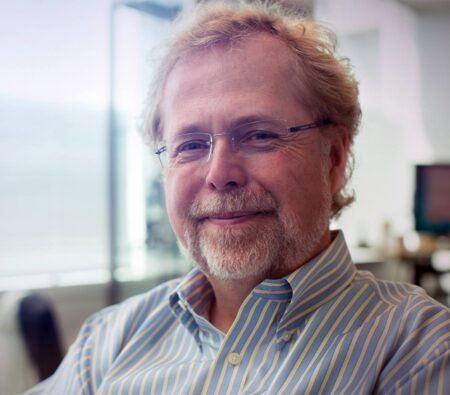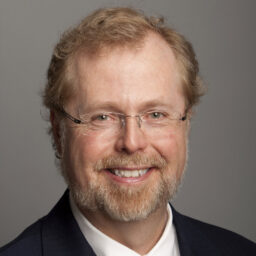Nathan Myhrvold: Reflections on a Transformational Gift
These personal reflections were shared by Hertz Fellow Nathan Myhrvold upon learning that an anonymous donor had made a generous $5 million endowment gift in his honor to support the Hertz Fellowship program.
I was 20 and just starting on a Ph.D. in theoretical and mathematical physics at Princeton University when I interviewed for the Hertz Fellowship. Back then, Edward Teller and Lowell Wood — two legendary physicists at Lawrence Livermore National Laboratory who had mastered far-ranging areas of science — ran the selection process. They were enthusiastic adherents of an interview technique similar to what an engineer would call “testing to destruction,” which involved posing lots of problems of increasing difficulty until the candidate finally utterly fails — because that’s the only sure way to measure their limits!
I left the interview thinking I had blown it and there was no chance I would get a fellowship. Among other things, I was focused pretty squarely on fundamental questions in physics, and the program was really looking for those who would apply their education to practical problems. Had you asked Lowell — or me — in 1979 what contributions I might eventually make to science and technology, there’s no way either of us would have foreseen the career to come. But Lowell advocated for me and said, “Look, I promise this kid will eventually do something applied.” And it turns out he was right! After a year of postdoctoral research, I left fundamental physics behind and made a beeline for the computer industry.
Later, as I recruited Hertz Fellows to my own teams, collaborated with them (and Lowell), and even helped raise a son (Cameron Myhrvold) who would earn a Hertz Fellowship, I came to understand the unusual characteristics that Hertz interviewers have looked for over the years. Exceptional academic talent and drive, sure — but also students energized by an uncommon sense of curiosity that almost guarantees they will veer into the unknown, blazing new trails. Another prerequisite: a high tolerance for failure and the persistence to push through it, because research is full of dead ends. The trick for success in science is some mixture of courage to try new things and resilience to push on when those things don’t work out the first time or the tenth time — or maybe even the hundredth time, depending on what you’re doing. New knowledge is wrestled out of a chronic state of confusion.
It’s often said that youth is wasted on the young. Well, you could equally say that, in academia, tenure is too often wasted on the old. Giving people the freedom to try risky things is most valuable very early in your career or when you’re setting the initial trajectory of your career.
The Hertz Fellowship’s focus on first-year doctoral students is part of why the program has had such a huge impact. Winning a Hertz Fellowship unshackles grad students from the financial constraints that so often limit their options. The support frees them to follow their curiosity, to be innovative, to tackle hard problems and to keep pushing knowledge forward even in the face of a certain amount of failure.
In my case, I certainly hit a lot of dead ends. I started in geophysics and meandered through mathematics, economics, cosmology and other detours en route to my Ph.D. and a postdoc at Cambridge University with Stephen Hawking. It turned out those were just warm-up moves for really big swerves to come: into software, the tech industry, then invention, culinary science, photography and even planetary science and paleontology. Through it all, what stuck with me most from my Hertz Fellowship was the realization that when you give talented, curious people the freedom to innovate, tremendous things happen.
Less than a decade after finishing my Ph.D. at Princeton, I applied that lesson at Microsoft, where I pitched Bill Gates on the idea of setting up Microsoft Research (MSR). Eventually MSR grew to become the largest industrial research lab in the world, and it has contributed enormously to the technology that powers the global economy.
After retiring from Microsoft as chief technology officer, I started a new company that would apply the Hertz model to spark inventions of many kinds, well beyond software. The idea was to gather a few extraordinarily innovative scientists and engineers and to support them with a business model that would allow us to focus almost all our energies on inventing. My Microsoft colleague Edward Jung and I teamed up with a few other partners to launch the company, Intellectual Ventures (IV), in 2000. Among the first inventors to join us were Lowell Wood and the Hertz Fellows Rod Hyde (1972) and Jordin Kare (1978).
Though the invention business evolved over the years, the Hertz model was a stunning success: with the support of IV, Lowell surpassed Thomas Edison’s longstanding record in 2015 to become the most prolific American inventor in history. So far, three other IV inventors have also surpassed Edison’s milestone, with more than 1,100 U.S. patents granted. Ten of the most productive 50 inventors in history have been part of our team at Intellectual Ventures.
The counts are remarkable, but what matters more is that IV chose to work on difficult but life-changing problems — hard nuts like sustainable nuclear energy, vaccine distribution in places that lack refrigeration, and accurate tests for cervical cancer that don’t require microscopes or gynecologists. Just as the Hertz Foundation takes a chance on every new Fellow it selects, we chose these problems confident in our ideas but fully aware that success was far from guaranteed. We increased our odds by recruiting Hertz Fellows who were just starting their careers.
I hired Philip Welkhoff (2004) to head up our epidemic prediction project shortly before he defended his dissertation. That project succeeded so well at predicting malaria epidemics that it soon grew into the Institute for Disease Modeling (IDM), which attracted Anna Bershteyn (2006) to oversee further development of its models of HIV and tuberculosis. IDM has been instrumental in the global effort to eradicate polio and in public health departments’ response to COVID-19 in the U.S. Philip now directs the malaria program at the Gates Foundation, and Anna conducts research in population health as a professor at NYU. Following in Lowell’s footsteps, both of them also interview candidates for the Hertz Fellowship, and Philip directs the selection process.
At Microsoft, I spent a lot of time thinking about the power of network effects, the exponential increase in the utility of a networked system as more participants connect to it. The Hertz Foundation harnesses an even more formidable multiplicative power by connecting its Fellows across disciplines, geographies and generations. When Lowell, Philip, Anna and I combined our efforts, we were able to tackle problems that would have thwarted us individually.
I’ve seen this combine-and-conquer approach work time and again. I saw it in invention sessions I led with Lowell, Rod, Jordin and others that planted the seeds that would become TerraPower, the largest advanced nuclear reactor project now underway in the United States. I saw it in the room at the Intellectual Ventures Laboratory where Hertz Fellows Tony Pan (2010) and Max Mankin (2012) showed us their first prototypes of a breakthrough heat-to-energy converter that would lead to the formation of their startup company, Modern Electron. They have gone on to create a game-changing way to produce hydrogen from natural gas without any greenhouse gas emissions.
And as a proud father, I have seen how seminal to my son Cameron’s career the intellectual freedom and scientific connections of his 2011 Hertz Fellowship have been. Starting his Ph.D. as a theoretical biologist, Cameron gradually drifted as I had toward the practical end of the scientific spectrum. He teamed with Michael Baym (2004) at Harvard University to work out how to use DNA sequencers like microscopes to find the weak spots in DNA microstructures. A few years later, he and Cheri Ackerman (2012) worked together to develop CRISPR-based diagnostics for SAR-CoV-2 and many other kinds of viruses. And today he runs his own molecular biology lab at Princeton University, helping other young scientists forge their own unique contributions to our understanding of nature and pioneering new ways to save and improve lives.
For all of these reasons, Rosemarie and I have been grateful to the Hertz Foundation and happy to support its vital mission over the years with donations of both funding and time. Rosemarie has been a director of the Foundation for more than five years. For me, it is a rare and profound honor to see this new endowment for Hertz Fellowships launched. I am hoping that the Hertz fellows whose education is funded by these fellowships will go off and have even more illustrious careers than I’ve managed to have.
When I survey the tremendous contributions to science and our society from the Hertz Fellows I know — and the many more whom I do not know but admire greatly — it’s hard to think of a grant program that delivers a bigger bang for the buck. The great thing about the Hertz Foundation is the thoroughly proven, well-honed machine it has developed over decades to select outstanding graduate students. That process draws strength from the network effect of all of the previous Hertz Fellows out there who assist in recommending students and helping them with their research. If you started a similar program from scratch, it might be decades until you figured out how to get it right. So I think the Hertz Foundation offers an incredible opportunity for donors to make a giant difference in the lives of small numbers of students, with the hope that those young scientists and engineers will create innovations and enhancements that hugely benefit the world.
This new endowment doubles down on a winning bet on human ingenuity. In a world full of growing problems, that is one sure path to solutions.

Learn more about the Nathan P. Myhrvold Fellowship and how it’s fueling our next generation of science and technology leaders.
Ways to Give
Every gift to the Hertz Foundation fuels groundbreaking research and helps strengthen our nation's security and economic vitality. That's why we offer a range of opportunities to make it easy and convenient for you to make your donation.
